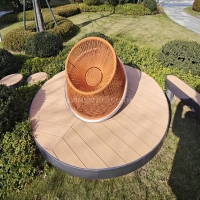Welcome to the website for landscape facilities products and knowledge.
What are the energy consumption implications of producing metal versus plastic landscape tables?
When choosing between metal and plastic landscape tables, energy consumption during production is a critical factor. Metal tables, typically made from aluminum or steel, require significant energy for mining, refining, and manufacturing. The process involves high-temperature smelting and shaping, contributing to a larger carbon footprint.
Plastic tables, often made from polyethylene or PVC, derive from petroleum-based materials. While plastic molding consumes less energy than metal smelting, the extraction and processing of fossil fuels add to its environmental toll. Additionally, plastic production releases harmful emissions, though advancements in recycled plastics are improving sustainability.
In terms of durability, metal tables often outlast plastic ones, reducing long-term replacement needs. However, plastic tables are lighter, lowering transportation energy costs. Both materials have trade-offs, but metal generally demands more energy upfront, while plastic poses challenges in waste management.
For eco-conscious buyers, considering recycled metals or bioplastics can mitigate energy impacts. Ultimately, the choice depends on balancing energy efficiency, lifespan, and environmental priorities for outdoor furniture.
Related search:

Recommendation
Swivel chair-Specialty steel structure woven rattan leisure chair with rotatable design